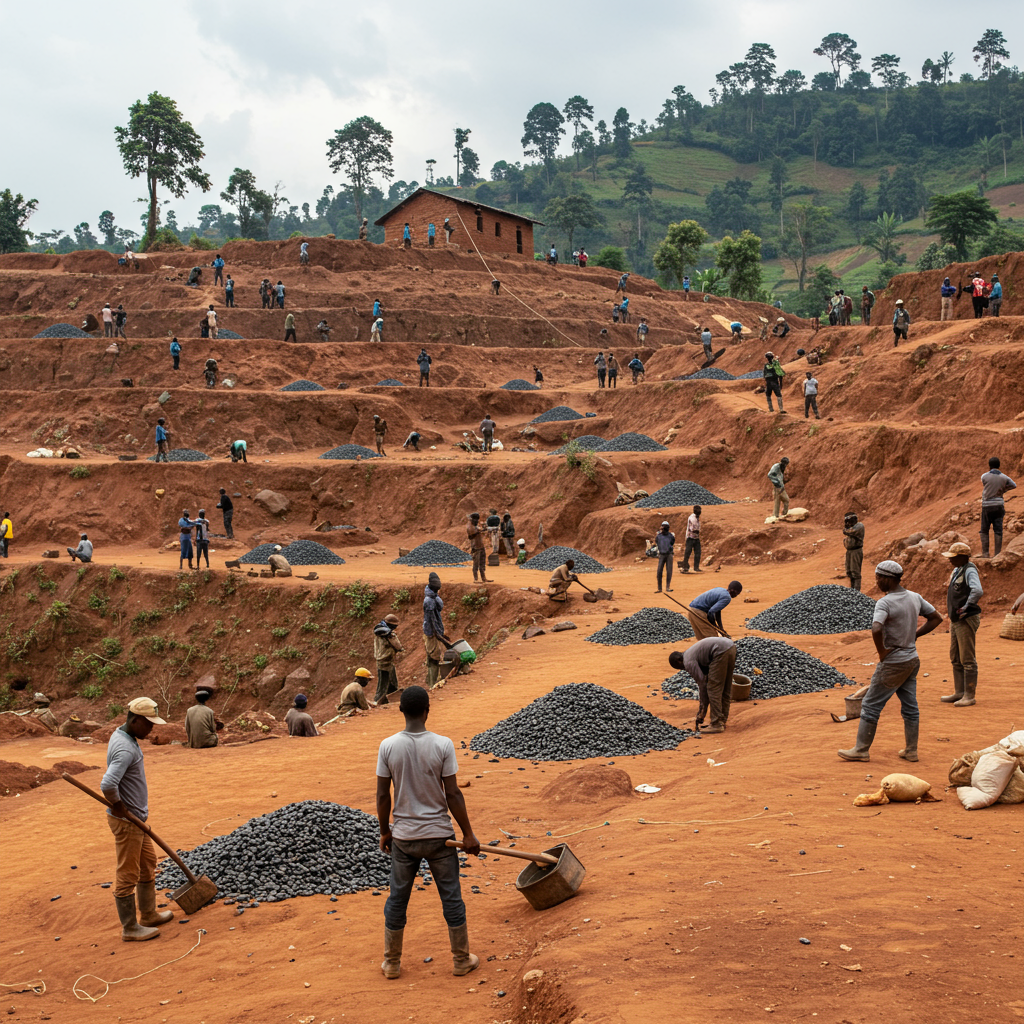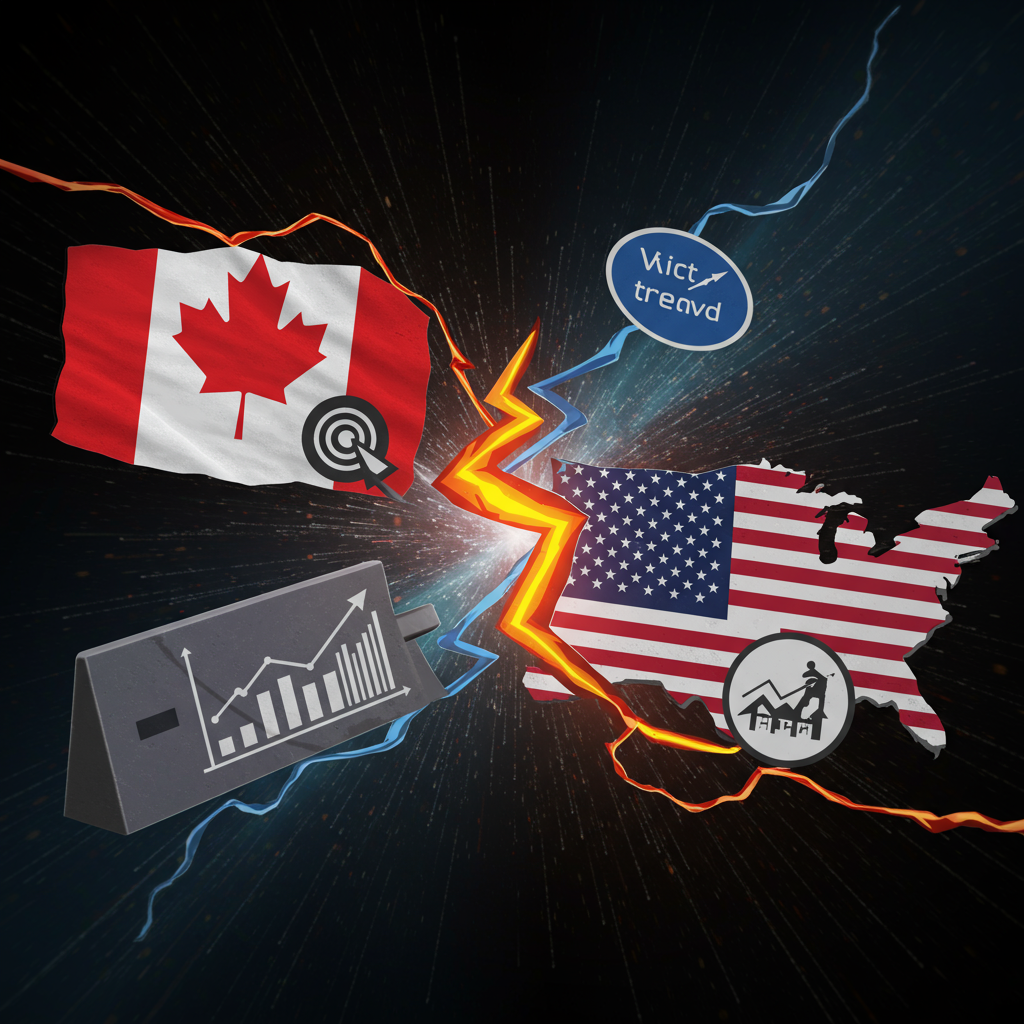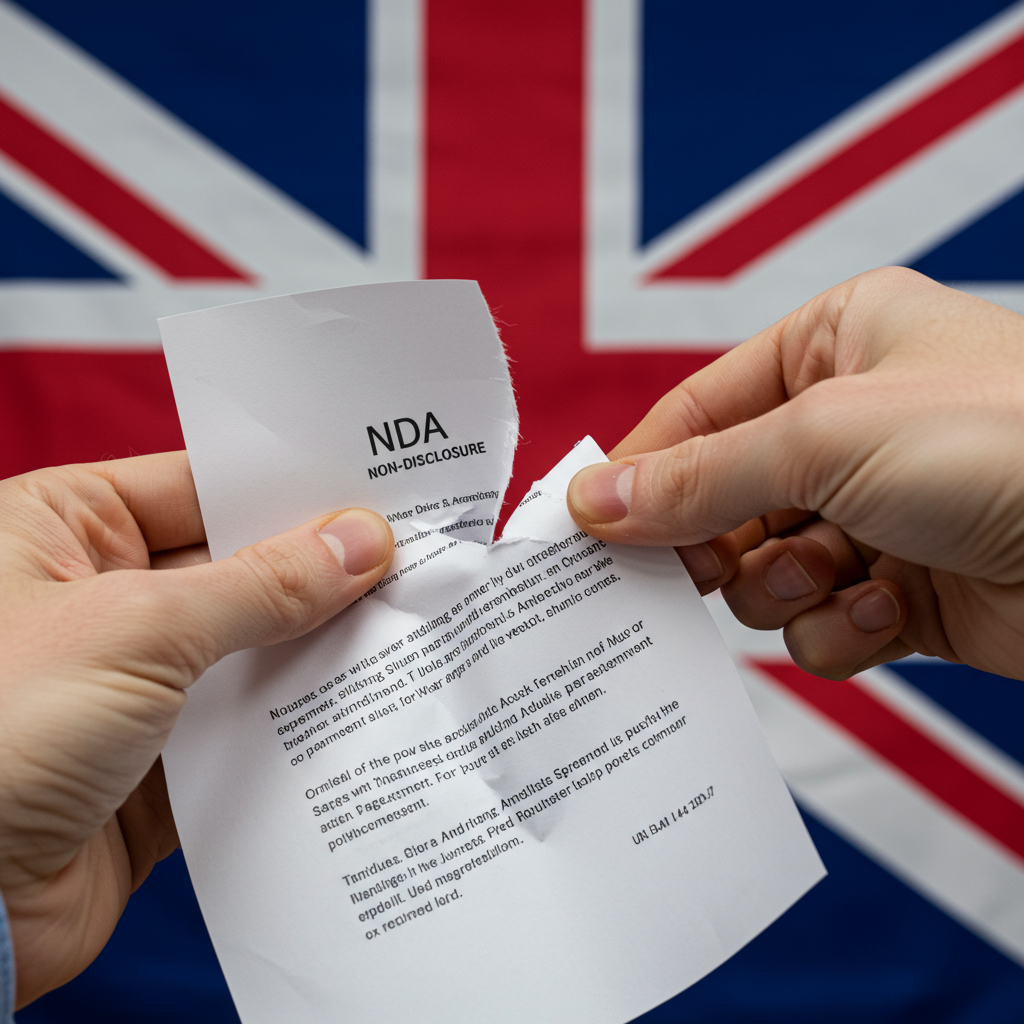Deep within the rugged, mineral-rich hills of eastern Democratic Republic of Congo lies a crucial site powering the global technology industry. This is the Rubaya mining complex in North Kivu province, a key source of coltan, a vital mineral used in mobile phones and other electronic devices. Gaining access to this remote location is rare, particularly now as it sits firmly under the control of the M23 rebel group. The BBC was recently granted such access, revealing a landscape teeming with activity and complex layers of conflict, economics, and human resilience.
Inside the Rubaya Coltan Mine: A Rare Glimpse
The scale of operations at Rubaya is immense. Spread across a vast expanse marked by countless pits and tunnels, thousands of individuals labor daily to extract the precious ore. Estimates from local supervisors suggest that on any given day, well over 10,000 people are engaged in the strenuous work of mining here.
The mining process is largely artisanal and intensely physical. Individuals venture deep underground, using basic shovels and tools to loosen the rock containing coltan. Others then take on the grueling task of hoisting heavy sacks of the extracted material to the surface, balancing the weight on their shoulders. At assembly points, the ore undergoes further processing, washed and filtered by hand using simple spades to isolate the valuable minerals. This raw coltan, technically a mix of columbite and tantalite, is essential for producing tantalum capacitors, tiny components critical for managing electrical flow in nearly all modern electronics.
Harsh Realities Underground
The environment at Rubaya is undeniably challenging. Navigating the steep, tricky terrain requires careful foot placement, often aided by walking sticks. Yet, this difficult landscape is the only workplace many of the miners have ever known. The labor itself is onerous and fraught with danger. Temperatures deep within the mine shafts can soar, and excavating the hard mineral deposits is physically demanding. Miners also face exposure to potentially harmful gases trapped underground. While there are efforts to mitigate some risks, such as occasionally pumping cold air into tunnels, the inherent dangers remain high.
Despite the hardship and risks, for many like miner Peter Osiasi, this demanding work offers a pathway to a better life. He shared his experience, acknowledging the heat, difficulty, and gas dangers. Yet, he expressed gratitude, stating that mining for the past five years allowed him to save money for a dowry, enabling him to marry and start a family. “My life has really changed. Mining has really helped me,” Osiasi told reporters, highlighting the transformative power, however limited, of the income earned.
The Strategic Prize: Coltan’s Global Importance and Local Conflict
The area encompassing the Rubaya mine, situated in the sprawling Masisi Hills of North Kivu province approximately 60km (37 miles) northwest of Goma city, holds globally significant mineral wealth. This single complex is estimated to contain 15% of the world’s coltan supply and accounts for half of DR Congo’s total known deposits.
Given its vast mineral riches, it is unsurprising that this region has long been a focal point of conflict and economic contention. The immense wealth generated by mining here has historically flowed into the hands of various armed groups that have controlled the area at different times, including units of the Congolese national army itself.
A History of Control: Armed Groups and Mineral Wealth
Eastern DR Congo has suffered from over three decades of instability since the 1994 Rwandan genocide. A complex web of armed groups operates here, driven by a mix of ethnic grievances, political agendas, and control over lucrative natural resources. The M23 rebel group, primarily composed of ethnic Tutsis, is the latest force to assert significant control over territory, including the vital Rubaya mine, which they seized in April 2023.
Under M23 Rule: Order, Claims, and Controversy
Patrice Musafiri, appointed by the M23 to supervise the Rubaya site, outlined how the rebel group claims to have reorganized operations since taking control. He asserted that the M23 has brought a degree of security to the mine, allowing miners to work without the constant fear that characterized previous periods. Musafiri stated that armed personnel are not permitted on the mining site itself, a significant claim in a region defined by armed presence.
According to Musafiri, the M23 established a dedicated mining department tasked with regulating safety protocols, monitoring conditions, and resolving internal disputes among the miners. He cited instances where dangerous tunnels are identified and closed to prevent accidents. He also highlighted the creation of a functioning market in Goma, facilitating the sale of minerals bought at Rubaya. Miners working at the site reportedly purchase permits from the M23 to operate, further integrating the rebels into the economic structure of the mine.
Allegations of Exploitation and Foreign Links
While the M23 supervisor presents a picture of organized control and improved security, the group’s activities are shrouded in controversy and serious allegations. A report from UN experts in December detailed how the M23 is allegedly generating substantial revenue, potentially hundreds of thousands of dollars each month, by taxing coltan extraction and trade at Rubaya. The report further alleged that a significant portion of these funds is sent directly to Rwanda. Both the M23 and the Rwandan government have consistently denied these specific allegations.
However, evidence compiled by UN experts and other observers suggests extensive support from Rwanda to the M23. Reports indicate thousands of Rwandan troops may be operating alongside the rebels, providing training and sophisticated weaponry. The M23’s military capabilities, which have enabled rapid territorial gains including capturing key cities like Goma and Bukavu, are widely attributed to this external backing. Satellite images and geolocated photos have also been presented as evidence of Rwandan presence near conflict zones and infrastructure improvements possibly linked to mineral transport towards the Rwandan border. This alleged support is often framed by Rwanda as necessary “defensive measures” against the presence of the FDLR, a group in eastern DR Congo containing some individuals linked to the 1994 genocide, which Rwanda considers an existential threat. The capture and control of resource-rich areas like Rubaya are seen by analysts as a key strategic and economic objective potentially shared by the M23 and its alleged backers.
The Complex Geopolitics of Eastern DR Congo
The conflict in eastern DR Congo is notoriously complex, involving not only the M23 and the Congolese army but also dozens of other armed militias. Ethnic dimensions are deeply intertwined with control over land and resources. The presence of groups like the FDLR, remnants of the Hutu extremist forces from the 1994 genocide, fuels Rwandan security concerns and provides a justification for intervention or support to proxy groups like the M23. The marginalization and vulnerability of Congolese Tutsi communities (like the Banyamulenge) also play a significant role, with the M23 claiming to protect their rights.
Diplomatic Efforts and Enduring Tensions
Against this backdrop of entrenched conflict, various diplomatic efforts are underway. A recent ceasefire agreement was signed in Washington on June 27, 2024, involving DR Congo and Rwanda, though notably excluding the M23 rebel group as a direct signatory. The deal included commitments for both nations to cease support for armed groups and facilitate disarmament.
The involvement of the United States in this peace process appears closely linked to DR Congo’s vast mineral wealth. Former US President Donald Trump publicly mentioned the prospect of the US gaining access to “a lot of the mineral rights.” Political analysts like Akramm Tumsifu suggest that DR Congo is leveraging its critical mineral reserves as a bargaining chip to secure much-needed military assistance and encourage significant investments from American firms, potentially shifting the balance from the current dominance of Chinese companies in the mining sector.
However, the M23 group has maintained that the Washington-backed deal fails to address the fundamental causes of the long-standing conflict. They reportedly favor separate peace talks mediated by Qatar, believing these negotiations are better positioned to tackle the complex root issues.
Fragile Peace: Recent Setbacks
Adding to the complexity and fragility of the situation on the ground, violent incidents have continued even after the Washington ceasefire was announced. One notable event involved the destruction of an aircraft by the Congolese army in the rebel-held district of Minembwe. The army claimed the plane entered airspace illegally, while the rebels alleged it was carrying essential humanitarian supplies and threatened retaliation.
This incident, occurring in an area reliant on air transport due to blocked roads, underscores the volatile reality despite diplomatic efforts. The absence of the M23 from the Washington agreement and the immediate continuation of hostilities highlight the immense challenges in achieving a lasting peace and implementing any form of ceasefire or disarmament among the numerous actors involved. Analysts note that without robust verification mechanisms and buy-in from all significant parties, diplomatic agreements signed far from the ground realities of eastern DR Congo struggle to gain traction.
Future Prospects: Investment, Development, and the Hope for Peace
Despite the ongoing instability and the complexities of operating in M23-controlled territory, the immense potential of the Rubaya mine continues to attract international interest. American companies are reportedly exploring investment opportunities. Patrice Musafiri indicated that foreign investment would be welcomed at Rubaya, but stipulated that any initiatives must include significant development for the local population. He specified requirements for creating jobs, building schools and hospitals, and crucially, increasing the daily wages earned by the miners themselves.
Currently, most mining communities in DR Congo, despite sitting on colossal natural wealth, lack even basic infrastructure, including accessible roads to the very mines where the minerals are extracted. Some analysts believe that the presence of American investors could potentially act as a deterrent against renewed fighting or the resurgence of other armed groups, introducing a new dynamic to the region’s security landscape.
However, it remains unclear how foreign investors would practically navigate doing business and ensuring responsible sourcing in an area where the M23 rebels still hold effective control. The parallel peace process mediated by Qatar, involving direct talks between the Congolese government and various armed groups including the M23, may offer more clarity on future governance and security arrangements in the coming months.
The Human Cost and Local Appeals
Ultimately, as diplomatic and economic maneuvers unfold, the daily reality for local people at the Rubaya mine, like others across eastern DR Congo, is dominated by the yearning for an end to the violence. The conflict has caused immeasurable suffering, displacing hundreds of thousands from their homes.
Miner Peter Osiasi, speaking for many, made a heartfelt appeal for stability. “My appeal to fellow young men and our leaders is to keep and maintain peace in our area,” he urged. As he prepared to return to the demanding, low-paying work deep underground, he added another crucial plea: “I also appeal to the owners of the mines to increase our pay because it’s very little.” His words serve as a stark reminder of the human cost woven into the supply chains that power our modern electronic lives.
Frequently Asked Questions
What is coltan and why is the Rubaya mine important globally?
Coltan is a metallic ore that contains the elements columbium (niobium) and tantalum. Tantalum extracted from coltan is a crucial component in manufacturing tantalum capacitors, which are small, high-capacity components found in almost all electronic devices, including smartphones, laptops, and gaming consoles. The Rubaya mine in eastern DR Congo is globally significant because it holds an estimated 15% of the world’s known coltan supply and half of DR Congo’s total deposits, making it a vital resource for the tech industry.
Who controls the Rubaya mine and what are the allegations against them?
Since April 2023, the Rubaya mine has been under the control of the M23 rebel group. While the M23 claims to have brought security and order to the site, including establishing safety protocols and a market, serious allegations persist. A UN experts’ report claimed the M23 profits significantly from taxing coltan from Rubaya, potentially earning hundreds of thousands of dollars monthly, with much of the revenue allegedly sent to Rwanda. Both the M23 and Rwanda deny these allegations.
How does the conflict in eastern DR Congo relate to mineral resources like coltan?
Mineral wealth, including coltan, gold, and other resources, is deeply intertwined with the conflict in eastern DR Congo. Control over lucrative mining areas provides funding for numerous armed groups, including the M23, perpetuating instability. International interest in these critical minerals, particularly for global supply chains, adds another layer of complexity, influencing diplomatic efforts and potential foreign investment, as seen with the recent Washington peace deal involving the US and DR Congo/Rwanda.
Conclusion
The rare glimpse inside the M23-controlled Rubaya coltan mine offers a powerful illustration of the complex realities linking global demand for technology with local conflict and human struggle. This vital source of coltan, essential for our smartphones and gadgets, sits at the nexus of a decades-long conflict fueled by ethnic tensions, competing armed groups, and the fight for control over immense mineral wealth. While diplomatic efforts and potential international investments are discussed, the fragile peace and uncertain future leave the thousands of artisanal miners, working in dangerous conditions for low pay, longing simply for an end to the violence and a chance for a better, more stable life. The story of Rubaya is a stark reminder of the unseen costs behind the devices we rely on daily.



